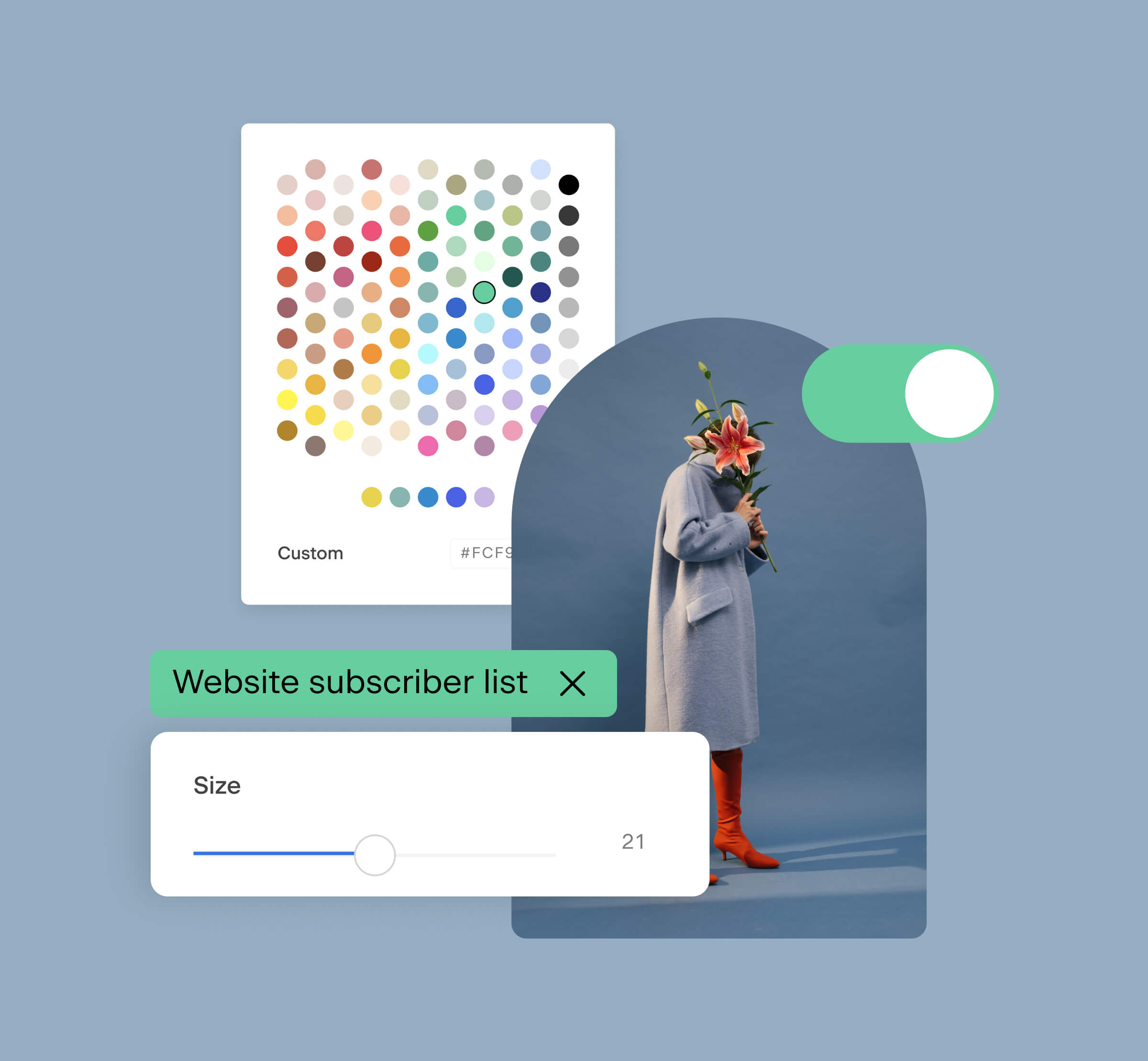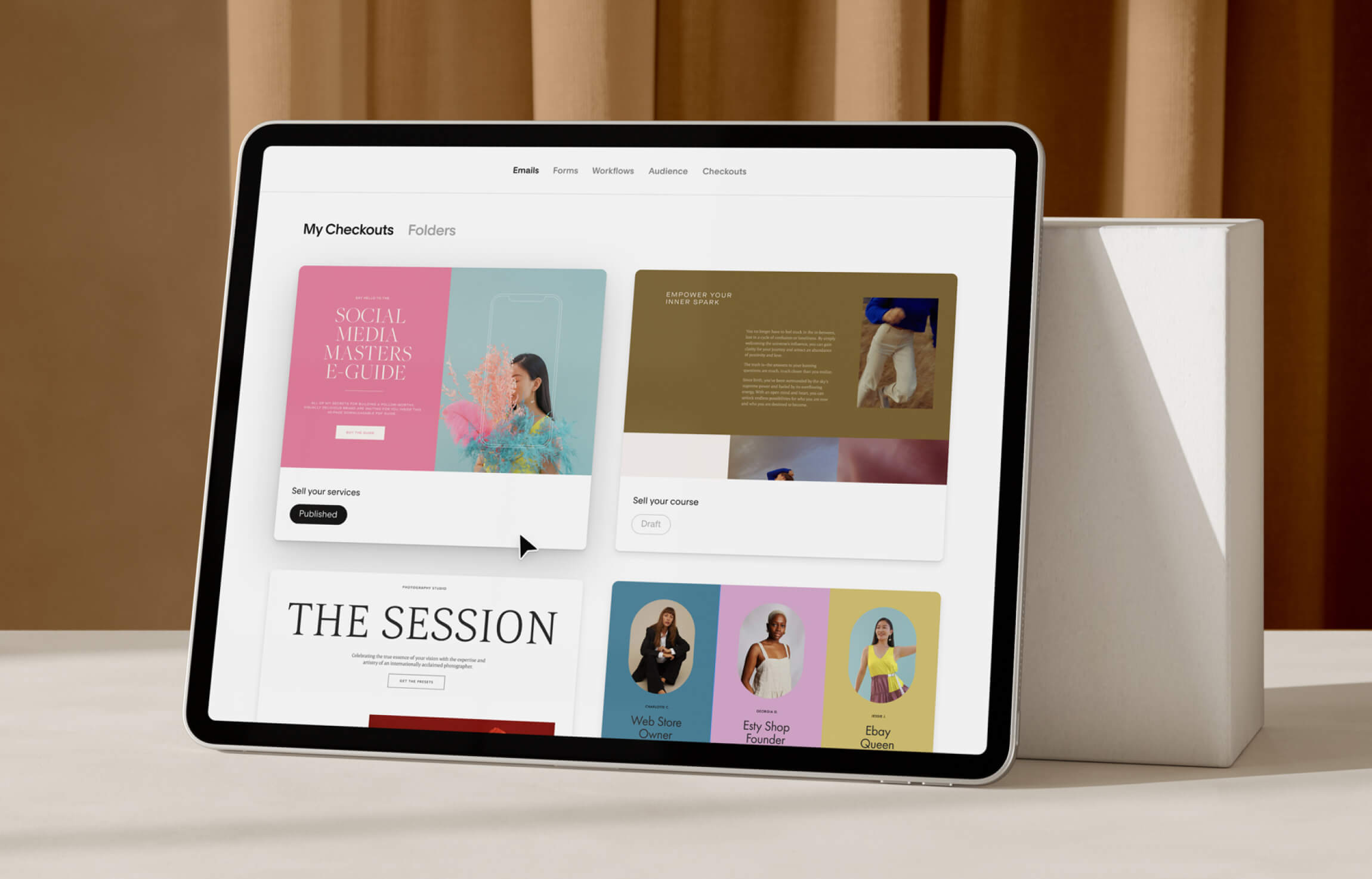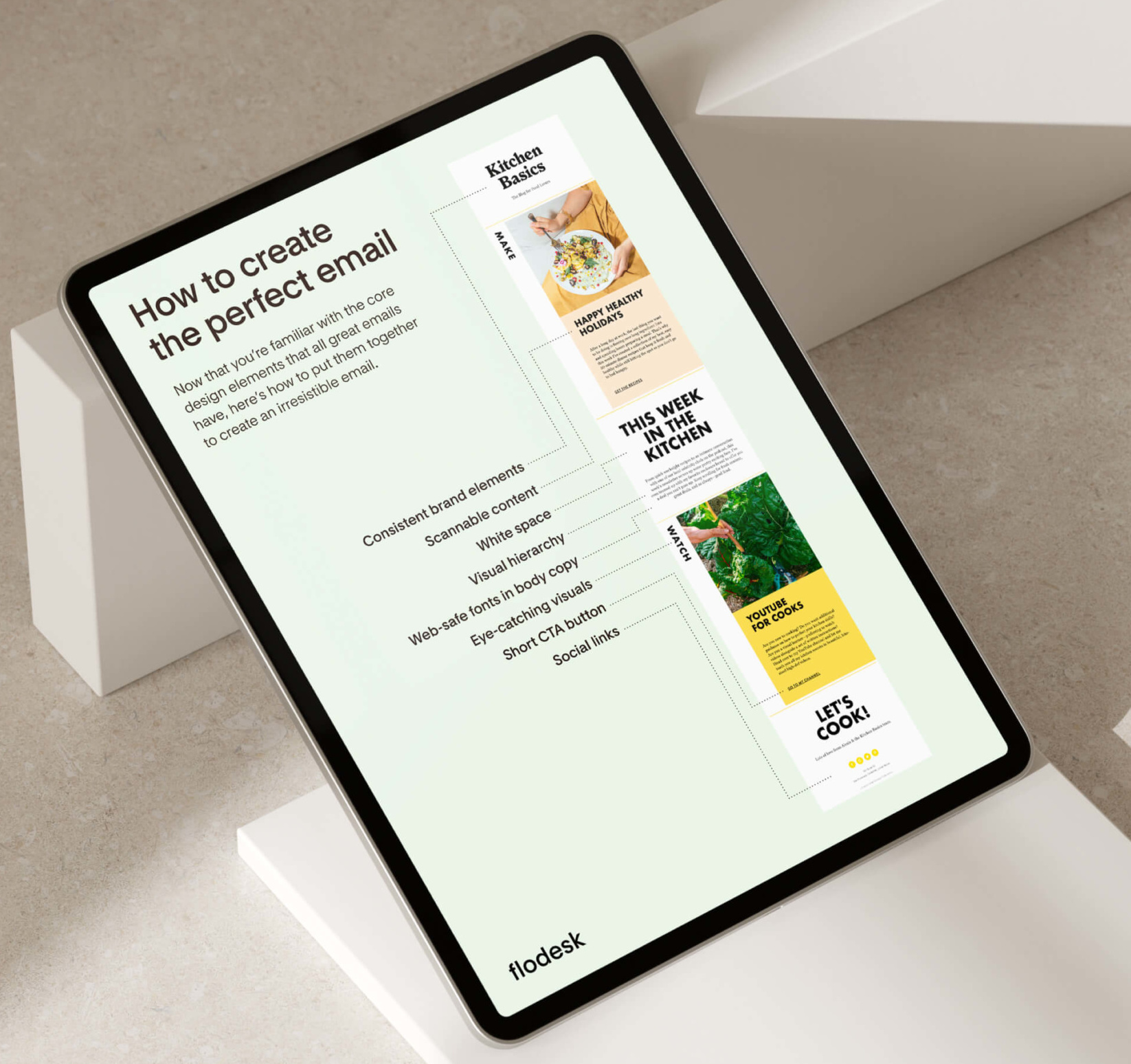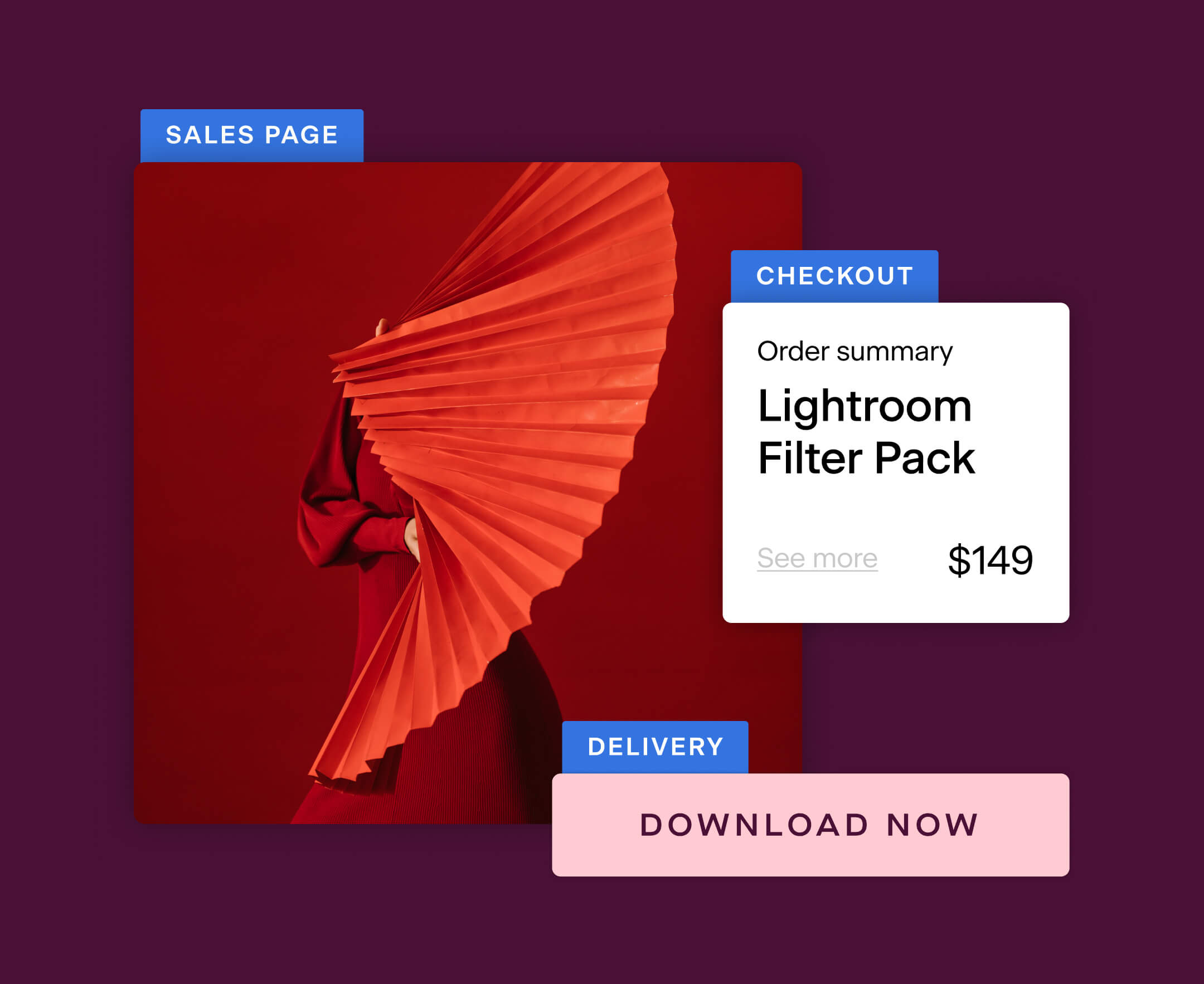How to sell on Pinterest: Small business step-by-step guide
Table of Contents Jump to:
Jump to:
Table of contents
Do you ever scroll Pinterest’s feed in search of inspiration only to find yourself clicking through to purchase a product or explore an offer further—sometimes more than once? If so, you can understand firsthand the great potential that lies in Pinterest for small businesses.
While you may have experienced how to buy on the platform, do you know how to sell or market your business there? This article will explore how to sell on Pinterest to expand your business reach, plus nine steps to get started and exceed your sales goals.
Let’s dive in.
Why sell on Pinterest?
Marketing your business on other social media platforms can be time-consuming, so adding another social network to the mix may feel daunting. However, with Pinterest, the return on investment (ROI) far exceeds the effort necessary to get started.
With an audience of almost half a billion, Pinterest gives you access to a wide and diverse audience of active users. Pinterest users are not mere scrollers—they’re actively engaged and seeking inspiration, which gives you an opportunity to easily convert them by being intentional with the pins you post.
It’s also one of the best platforms to boost traffic to your website. With a Pinterest business account, you can direct people to your website, blog, newsletter, and more.
Shoppers on Pinterest are almost always at the decision stage in the sales funnel. In fact, nine out of ten users visit the platform to get inspiration for their next purchase. This makes conversion easy, as 85% of weekly pinners make purchases based on pins they see from businesses.
Pinterest helps you:
- Reach a diverse audience of engaged users
- Drive traffic to your online store, website, or email newsletter
- Make massive sales
- Meet customers at the bottom of the sales funnel
- Convert your audience faster with well-targeted content
Does Pinterest still work for small businesses?
Pinterest has evolved over the years with the introduction of sponsored pins and other paid features. If you’re on a slim budget and are wondering if Pinterest can still help you grow your business organically, keep reading.
While sponsored posts are great for more reach and improved conversion, organic pins have an average lifespan of six months. This means a pin posted six months ago can still gain traction today, even if it’s unsponsored. Also, 97% of searches on Pinterest are unbranded, which levels the playing field for all brands—big or small.
No matter what you sell—whether it’s digital products or physical goods—Pinterest can help you effortlessly achieve your business goals. Ready to start selling on Pinterest? Get inspired with 58 ideas for digital products to sell in every niche.
While Pinterest and other social media platforms are great places to promote sales and build an online community, remember that they are rented spaces. These platforms could disappear tomorrow, so getting your audience to an owned space, such as a Telegram group, Slack, or email list, is key.
Still unsure if Pinterest is the best sales platform for your small business? If so, consider selling with Flodesk Checkout. Flodesk Checkout makes it easy to sell digital anything with gorgeous sales pages, online payments, and instant product delivery—all in one place. Get started with sales page templates that turn visitors into buyers. Try it free.
Looking to Boost Your Sales on Pinterest?
Flodesk makes it easy to create beautiful, conversion-optimized sales pages to link from your Pins. Take your Pinterest strategy to the next level.

Industries that do well on Pinterest
As a visual search engine, Pinterest works better for some industries than others. These business types tend to sell well on the platform:
- Clothing and fashion
- Real estate, architecture, and home decor
- Beauty and skincare
- Food and beverages
- Health and wellness
- Event planning, weddings, and holidays
- DIYs and crafts
- Travel and tours
9 steps to selling on Pinterest
Selling on Pinterest doesn’t have to be difficult. By following these nine steps, you’ll be exceeding your sales goals and growing your business in no time.
1. Create a Pinterest business account
The first step to selling on Pinterest is opening a business account. There are three ways to do this. You can convert your personal Pinterest account to a business account, add a business profile to your personal account, or open a standalone business account.
How to convert a personal account to a business account:
- Log in to your personal account on Pinterest
- Click “accounts and more options”
- Choose “convert to business”
- Select “upgrade”
- Add your business name and other information to finish reconfiguring the account
How to add a business profile to a personal account:
- Log in to your personal account on Pinterest
- Click on “accounts and more options”
- Select “add account”
- Choose “add a free business profile”
- Click “get started” and follow the prompts to create your business account
How to open a standalone Pinterest business account:
- Visit pinterest.com/business/create/
- Click “create account,” then enter your email, create a password, and fill in the remaining information to finish your set-up
With a business account, you get access to Pinterest Ads, Pinterest Analytics, rich pins, the verified merchant program, and more.
2. Optimize your Pinterest business account
To optimize your account, claim your website by connecting your Pinterest account with your website or online shop. This helps drive traffic from Pinterest to your website or store.
Next, brand your Pinterest profile with a captivating profile picture and a well-optimized bio description. Consider applying for the verified merchant program to boost your credibility and earn buyers’ trust. This is similar to the blue tick given on other social networks, and it’s free.
Below is an example of a verified merchant business page on Pinterest.
3. Set up your catalog
Pinterest’s Catalog feature is for business owners whose Pinterest business account links to their website or online store. To set up your catalog, you need a data source—also known as a product feed or product catalog. The data source contains all product information on your online store or website, such as product description, image URL, price, availability, and more.
After submitting your data source and gaining approval, Pinterest will create product pins from it, which appear on the “Shop” tab of your profile. This will automatically update every 24 hours to maintain up-to-date product information.
For more information on getting started with a product feed, read How to Sell Digital Products Online.
Are Your Pinterest Pins Converting?
Flodesk helps you bridge the gap between Pins and purchases with stunning sales pages. Enhance your Pinterest marketing strategy.

4. Create stunning, informative pins
Pinterest is a highly visual platform, so creating high-quality visuals—such as product photos, graphic designs, and videos—is key to attracting and converting your target audience into buyers. With Canva templates, you can create stunning visuals for your Pinterest page at little or no cost.
Your Pinterest posts, also known as “pins,” can either be sponsored or organic. You can create different types of pins, such as image pins, video pins, product pins, promoted pins, shop-the-look pins, try-on product pins, rich pins, and collection pins. While creating quality visuals is essential on Pinterest, it’s equally as important to craft pins that provide viewers with valuable information.
Rich pins extract metadata from your website or online store and add them to your pins. There are various types of rich pins, such as article pins, product pins, and recipe pins. These are beneficial as they provide extra information about your pins, which gives pinners a richer experience and increases engagement. They’re also optimized for SEO because they include detailed information that helps your content appear for relevant keywords.
To set up rich pins, all you need to do is add metadata to the content on your website or online store, then apply it on Pinterest.
Top tips to get the most out of your Pinterest pins:
- Ensure your pins are visually appealing and of high quality
- Create original pins. While reposting other people’s pins isn’t a bad idea, creating and posting original pins helps build your brand
- Schedule pins for consistency. This is key to getting great results on the platform
- Be descriptive with your pins and organize them into boards to help people know what the pin is about
- Add a Call To Action (CTA) to each pin you post
- Promote well-performing pins for more reach and improved conversion
5. Implement content marketing
Content marketing can help amplify your Pinterest selling efforts and improve your engagement. .Beyond pinning pictures and videos of your products, look for opportunities to educate your audience and add value to their lives.
Start by creating a content marketing strategy and analyzing competitors’ pins to understand what pinners expect of brands like yours on the platform.
For optimal results, keep the following top of mind when creating your Pinterest content strategy:
- Create educational content, such as DIYs, how-to guides, listicles, and infographics, that resonates with Pinners
- Stay up-to-date on trends and post relevant seasonal content
- Feature user-generated content to gain buzz on your Pinterest business profile
- Write attention-grabbing descriptions to hold Pinners’ attention
- Conduct regular competitor analysis to learn what others are doing, and ideate on how you can do it better
- Maintain consistency with a content calendar
- Take advantage of Pinterest analytics to improve your content marketing strategy
6. Pay attention to Pinterest SEO
Pinterest is unlike other social media platforms, as it’s a hybrid platform combining the features of a search engine with the visual dynamics of a social media platform. An SEO strategy is key to attracting the right audience, driving traffic to your website, and making sales.
With Pinterest SEO, you can optimize your pins for discoverability when shoppers search for related terms on the platform. You can increase organic traffic to your pins by:
- Using the right keywords in product descriptions
- Adding pins to relevant boards
- Posting quality pins consistently
- Following relevant trends
- Using rich and promoted pins
Ready to Sell More on Pinterest?
Create compelling sales pages with Flodesk and drive more traffic from your Pins to your products.

7. Engage with other accounts
Just like any social media platform, engaging with other brands on the platform will help grow your engagement on Pinterest—and in turn, your business. You can start by following accounts of individuals with similar interests or interests related to your business.
Re-pinning, liking, and commenting on others’ posts, creating engaging content that solves your audience’s problems, and responding to followers’ comments on your posts are great ways to engage with others and build relationships that can benefit your business.
8. Experiment with Pinterest Ads for better results
Pinterest Ads is 2.3x cheaper cost per conversion and has double the return on ad spend compared to other social media platforms. If you’re considering growing your business with paid social promotions, Pinterest is an excellent option.
Paid pins can help you achieve your business goals from the top to the bottom of your sales funnel—without excessive ad spend. Make the most of your marketing strategy with the 11 best sales funnel builders. Use Pinterest’s Ads Manager to easily create, manage, and track the progress of your campaigns to achieve set goals.
9. Track your performance and adjust your strategy
Without tracking your Pinterest analytics, it’s difficult to know what’s working, what should be removed, and what needs to be adjusted in your content strategy.
Start by tracking relevant metrics to see how engaging (or not) your pins are. Pin stats such as likes, saves, comments, re-pin, follows, and clicks can help you measure your content marketing success and identify top-performing pins for paid promotion and repurposing.
Build beautiful sales pages that boost your bottom line with Flodesk Checkout
A great selling strategy starts with stunning sales pages that turn visitors into customers. With Flodesk Checkout, choose from a library of beautiful sales page templates that are optimized for conversions. Start selling digital anything with gorgeous sales pages, online payments, and instant product delivery—all in one place. Get started selling today!
Pinterest selling FAQs
What sells best on Pinterest?
Many kinds of products perform well on Pinterest. However, some industries gain more traction on the platform than others. Fashion items, beauty and skincare products, home decor, food and drinks, DIY guides, and crafts tend to sell best on Pinterest.
How do I become a seller on Pinterest?
Becoming a seller on Pinterest requires opening a Pinterest business account and connecting it with your online store or website.
How much does it cost to sell on Pinterest?
Selling on Pinterest is free. All you need to do is open a business account, optimize your profile, and start pinning. However, you can create paid ads to give your pins more reach and improve conversions.
How do I attract customers on Pinterest?
Pinterest is a visual search engine, so including clear photos, appealing graphics, and quality video content helps attract customers to your page. You can also attract more customers by using relevant keywords in your product descriptions to help people find you easily.
Does Pinterest take a cut of sales?
No. Money made from sales on the platform goes directly to business owners. Pinterest makes its revenue from ads.









